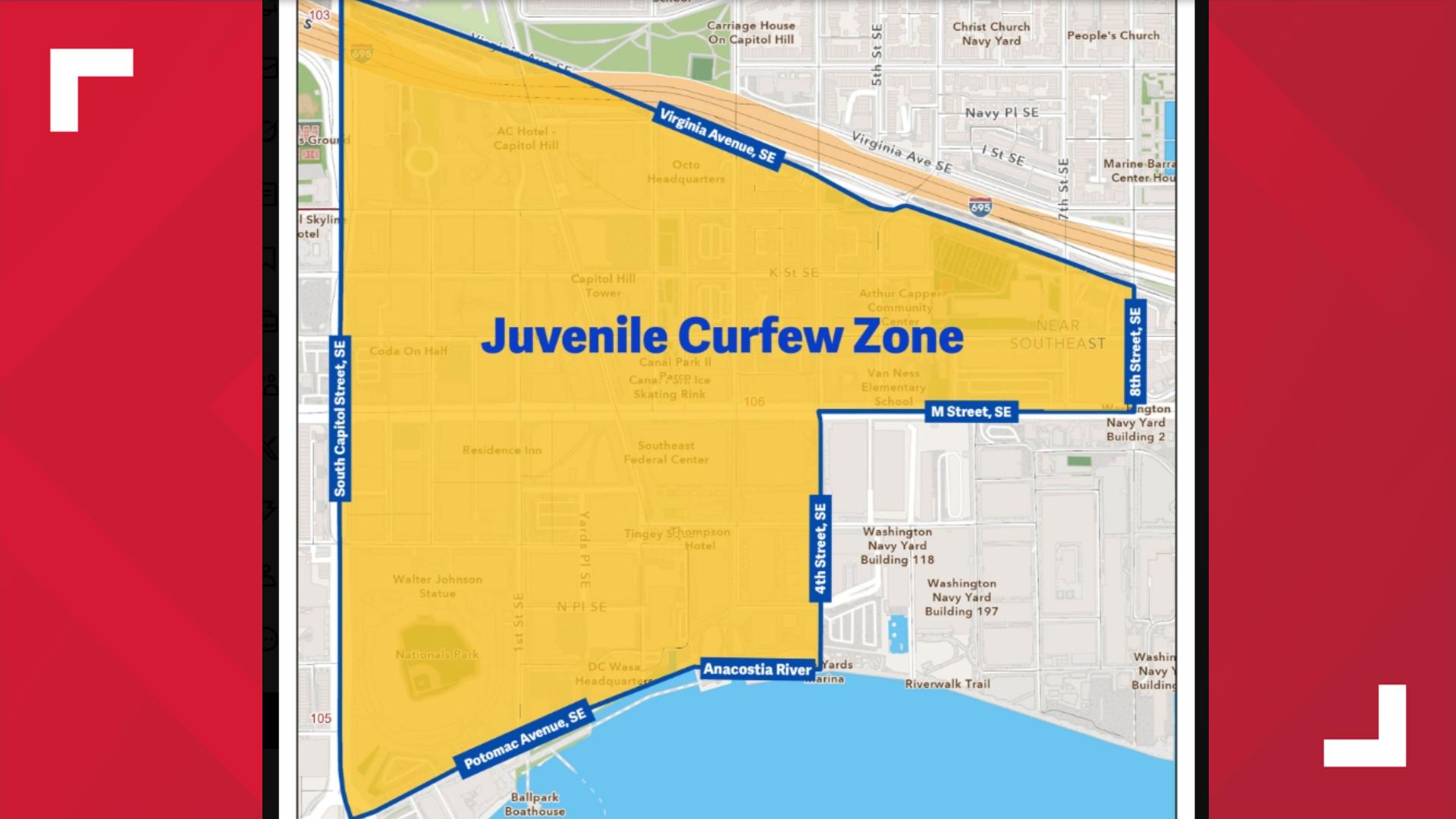Safety Curfew Implemented: In response to concerns over public safety, the Metropolitan Police Department (MPD) has established a temporary Juvenile Curfew Zone in the Navy Yard area of Washington, D.C. This measure, authorized under the Juvenile Curfew Emergency Amendment Act of 2025, aims to address potential risks associated with large gatherings of youth. The details of this initiative, including its scope and exceptions, have been widely reported by local news outlets such as WUSA9 and FOX 5 DC, as well as national publications like Newsweek.

Table of Contents
Navy Yard Juvenile Curfew Zone
The temporary curfew, announced by MPD Chief Pamela A. Smith, was in effect from Sunday, August 10, through Wednesday, August 13, 2025. During this period, the curfew was active nightly from 8 p.m. to 11 p.m. This initiative is specifically targeted at the Navy Yard area, where authorities have observed gatherings of young people that they believe could potentially compromise public safety. The establishment of this zone is a direct application of the Juvenile Curfew Emergency Amendment Act of 2025, which empowers the MPD Chief to create such zones under specific circumstances. According to the official announcement by the MPD, this is the fourth time this year that D.C. has utilized these emergency curfew powers.
Scope of the Curfew
Within the designated Juvenile Curfew Zone, the curfew prohibits individuals aged 17 and under from gathering in groups of nine or more in any public place or establishment. This restriction is designed to prevent the formation of large, potentially disruptive groups. It is important to note that this curfew is in addition to the existing citywide curfew for minors, which is in effect through August 31, 2025. The citywide curfew prohibits those 17 and under from being out between the hours of 11 p.m. and 6 a.m. nightly.
Exceptions to the Curfew
While the curfew is in place to maintain order and safety, it also recognizes certain legitimate reasons for young people to be out in public. The Juvenile Curfew Emergency Amendment Act of 2025 outlines several exceptions to the curfew, ensuring that minors are not unduly restricted in their movements. These exceptions are carefully crafted to balance public safety concerns with the rights and needs of young people.
Permitted Activities
The following circumstances are considered exceptions to the Navy Yard curfew:
- Accompaniment by a Parent or Guardian: Minors are exempt from the curfew if they are accompanied by a parent or legal guardian.
- Errands for a Parent: If a minor is running an errand for a parent or guardian, without making any detours, they are not subject to the curfew.
- Interstate Travel: Minors engaged in interstate travel are exempt.
- Work or Commuting: Those who are working or commuting to or from a job, without detours, are not subject to the curfew.
- Emergencies: In the event of an emergency, the curfew does not apply.
- Residential Proximity: Minors standing on a sidewalk adjoining their residence or a neighbor’s residence are exempt, provided there are no complaints.
- Official Activities: Attendance at official school, religious, or city-sponsored recreational activities is permitted.
- First Amendment Rights: Exercising First Amendment rights, such as freedom of speech or assembly, is also an exception.
Enforcement and Intent
The Metropolitan Police Department has emphasized that the primary goal of the curfew is not to target individual teenagers but to prevent large gatherings that could potentially pose risks to public safety. According to WUSA9, law enforcement officials will be actively patrolling the Navy Yard area during the curfew hours to ensure compliance and address any potential issues. The MPD’s approach focuses on de-escalation and community engagement, seeking to work collaboratively with young people and residents to maintain a safe environment for everyone.
Previous Curfew Implementation
This is not the first time that a juvenile curfew zone has been established in the Navy Yard area. As reported by FOX 5 DC, a similar curfew zone was implemented in July of this year. This prior experience provides the MPD with valuable insights into the effectiveness of such measures and allows them to refine their approach based on past observations and outcomes. The decision to implement another curfew zone reflects the ongoing concerns about public safety in the area and the need for proactive measures to address potential risks.
Legal Basis: Juvenile Curfew Emergency Amendment Act of 2025
The authority to establish these temporary juvenile curfew zones stems from the Juvenile Curfew Emergency Amendment Act of 2025. This legislation grants the Chief of the MPD the power to create such zones in areas where large groups of youth gatherings are deemed to pose a risk to public safety. The Act outlines the specific conditions under which a curfew zone can be established, the duration of the curfew, and the exceptions that must be considered. The MPD’s actions are therefore grounded in a legal framework that provides the necessary authority and safeguards to ensure that the curfew is implemented fairly and effectively.
In conclusion, the establishment of the temporary Juvenile Curfew Zone in Navy Yard represents a targeted effort by the MPD to address specific public safety concerns related to large gatherings of youth. While the curfew imposes certain restrictions on minors, it also includes important exceptions to protect their rights and freedoms. The MPD’s emphasis on prevention and community engagement underscores its commitment to maintaining a safe environment for all residents, balancing law enforcement with the needs of the community. The effectiveness of this strategy will continue to be monitored and evaluated, informing future decisions regarding public safety measures in the District of Columbia.
